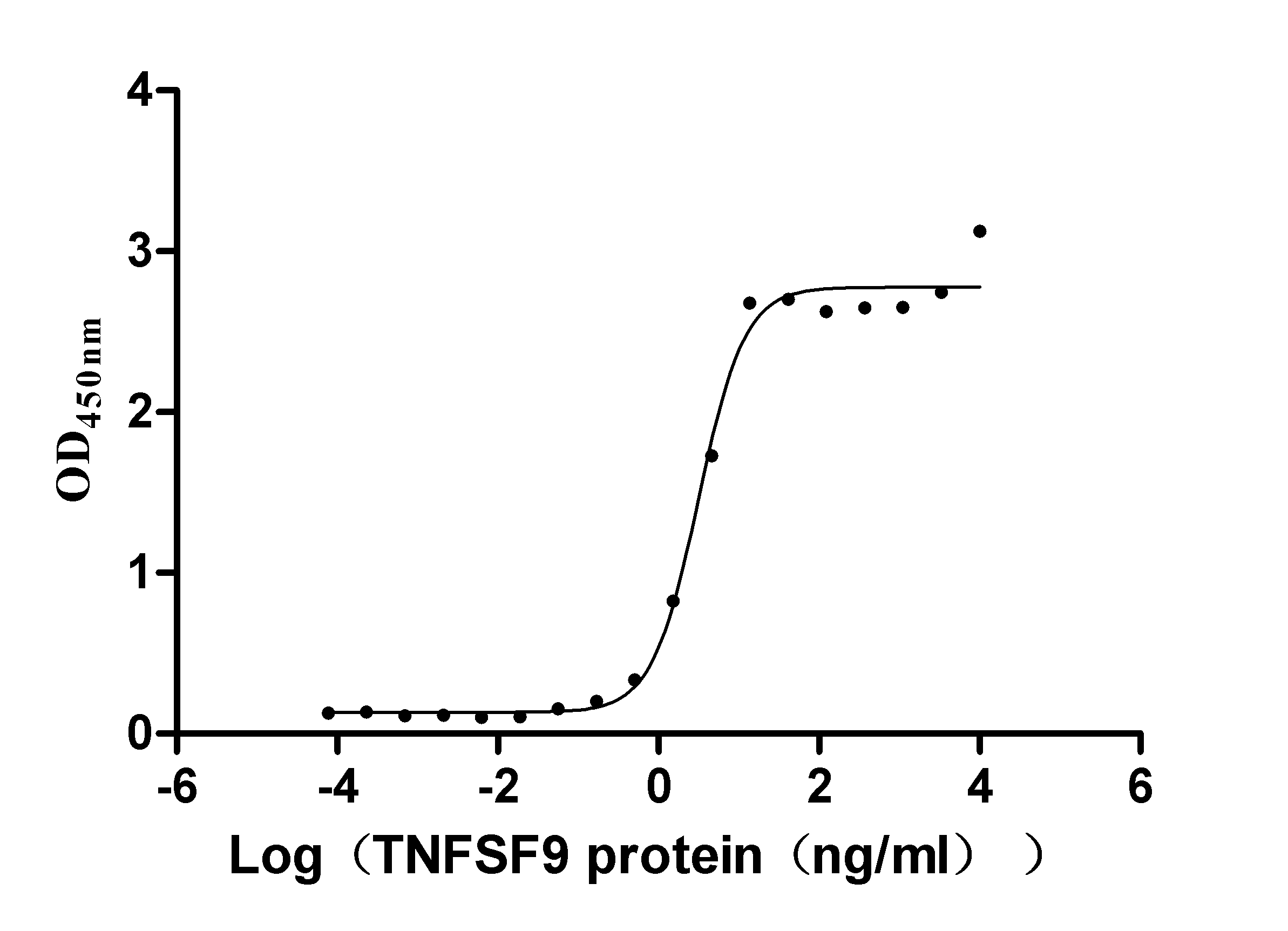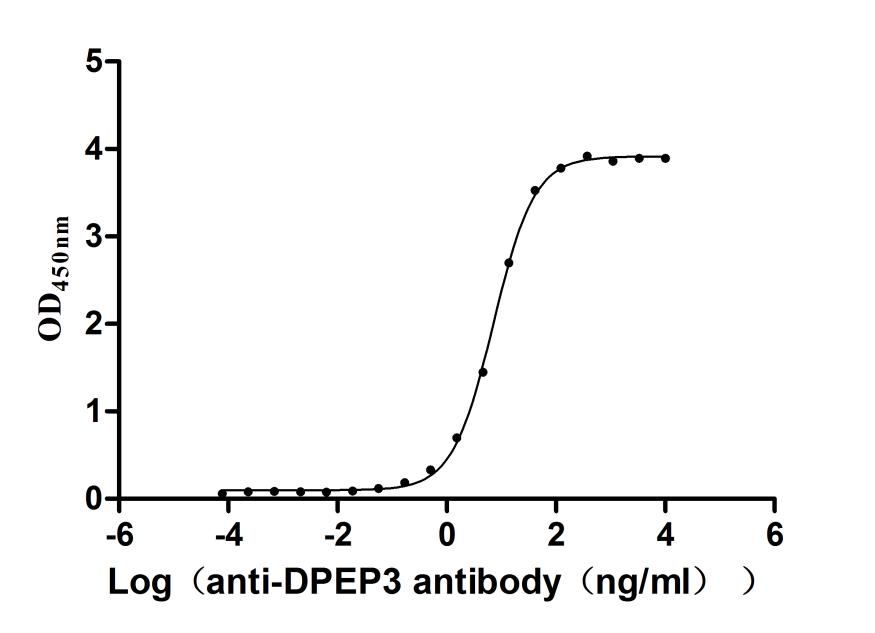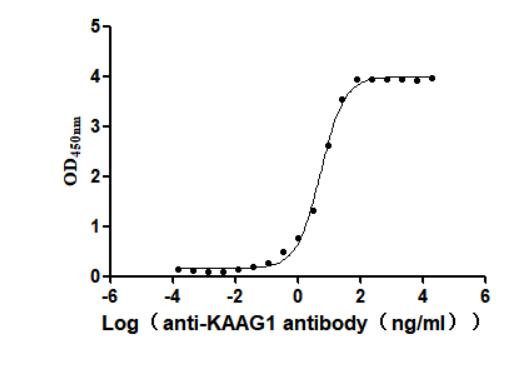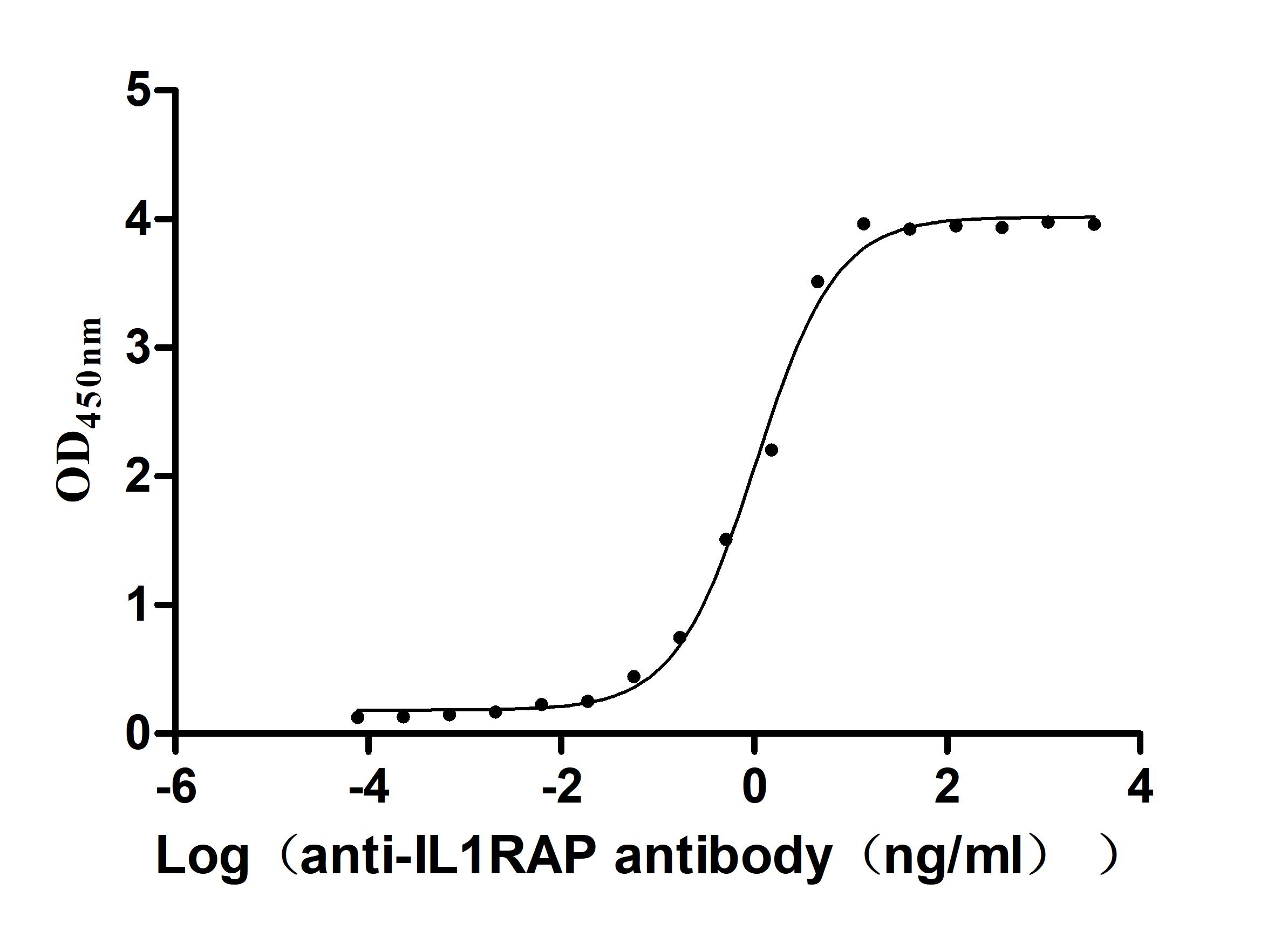Recombinant Human Tripartite motif-containing protein 5 (TRIM5)
In Stock-
中文名称:人TRIM5重组蛋白
-
货号:CSB-EP874861HU
-
规格:¥1344
-
图片:
-
其他:
产品详情
-
纯度:Greater than 90% as determined by SDS-PAGE.
-
基因名:TRIM5
-
Uniprot No.:
-
别名:TRIM5; RNF88; Tripartite motif-containing protein 5; RING finger protein 88; RING-type E3 ubiquitin transferase TRIM5
-
种属:Homo sapiens (Human)
-
蛋白长度:Full Length
-
来源:E.coli
-
分子量:70.3kDa
-
表达区域:1-493aa
-
氨基酸序列MASGILVNVKEEVTCPICLELLTQPLSLDCGHSFCQACLTANHKKSMLDKGESSCPVCRISYQPENIRPNRHVANIVEKLREVKLSPEGQKVDHCARHGEKLLLFCQEDGKVICWLCERSQEHRGHHTFLTEEVAREYQVKLQAALEMLRQKQQEAEELEADIREEKASWKTQIQYDKTNVLADFEQLRDILDWEESNELQNLEKEEEDILKSLTNSETEMVQQTQSLRELISDLEHRLQGSVMELLQGVDGVIKRTENVTLKKPETFPKNQRRVFRAPDLKGMLEVFRELTDVRRYWVDVTVAPNNISCAVISEDKRQVSSPKPQIIYGARGTRYQTFVNFNYCTGILGSQSITSGKHYWEVDVSKKTAWILGVCAGFQPDAMCNIEKNENYQPKYGYWVIGLEEGVKCSAFQDSSFHTPSVPFIVPLSVIICPDRVGVFLDYEACTVSFFNITNHGFLIYKFSHCSFSQPVFPYLNPRKCGVPMTLCSPSS
Note: The complete sequence including tag sequence, target protein sequence and linker sequence could be provided upon request. -
蛋白标签:N-terminal 6XHis-B2M-tagged
-
产品提供形式:Liquid or Lyophilized powder
Note: We will preferentially ship the format that we have in stock, however, if you have any special requirement for the format, please remark your requirement when placing the order, we will prepare according to your demand. -
缓冲液:Tris-based buffer,50% glycerol
-
储存条件:Store at -20°C/-80°C upon receipt, aliquoting is necessary for mutiple use. Avoid repeated freeze-thaw cycles.
-
保质期:The shelf life is related to many factors, storage state, buffer ingredients, storage temperature and the stability of the protein itself.
Generally, the shelf life of liquid form is 6 months at -20°C/-80°C. The shelf life of lyophilized form is 12 months at -20°C/-80°C. -
货期:3-7 business days
-
注意事项:Repeated freezing and thawing is not recommended. Store working aliquots at 4°C for up to one week.
-
Datasheet & COA:Please contact us to get it.
相关产品
靶点详情
-
功能:Capsid-specific restriction factor that prevents infection from non-host-adapted retroviruses. Blocks viral replication early in the life cycle, after viral entry but before reverse transcription. In addition to acting as a capsid-specific restriction factor, also acts as a pattern recognition receptor that activates innate immune signaling in response to the retroviral capsid lattice. Binding to the viral capsid triggers its E3 ubiquitin ligase activity, and in concert with the heterodimeric ubiquitin conjugating enzyme complex UBE2V1-UBE2N (also known as UBC13-UEV1A complex) generates 'Lys-63'-linked polyubiquitin chains, which in turn are catalysts in the autophosphorylation of the MAP3K7/TAK1 complex (includes TAK1, TAB2, and TAB3). Activation of the MAP3K7/TAK1 complex by autophosphorylation results in the induction and expression of NF-kappa-B and MAPK-responsive inflammatory genes, thereby leading to an innate immune response in the infected cell. Restricts infection by N-tropic murine leukemia virus (N-MLV), equine infectious anemia virus (EIAV), simian immunodeficiency virus of macaques (SIVmac), feline immunodeficiency virus (FIV), and bovine immunodeficiency virus (BIV). Plays a role in regulating autophagy through activation of autophagy regulator BECN1 by causing its dissociation from its inhibitors BCL2 and TAB2. Also plays a role in autophagy by acting as a selective autophagy receptor which recognizes and targets HIV-1 capsid protein p24 for autophagic destruction.
-
基因功能参考文献:
- study demonstrates the feasibility of editing the TRIM5 gene in human cells and identifies the main challenges to be addressed in order to use this approach to confer protection from HIV-1 PMID: 29373607
- genetic polymorphism is associated with susceptibility to HIV infections in Brazil PMID: 27388872
- TRIM5 and TRIM22 single nucleotide polymorphisms are associated to increased odds of significant liver fibrosis and sustained virological response after pegIFNalpha/RBV therapy in human immunodeficiency virus/hepatitis C virus coinfected patients. PMID: 27590274
- TRIM5alpha polymorphisms were associated with proviral loads, indicating that TRIM5alpha could be implicated in HTLV-1 replication. PMID: 28420387
- TRIM5alpha potently restricts HIV-1 infection of Langerhans cells but not of subepithelial DC-SIGN+ dendritic cells PMID: 27919079
- Collectively, these results are consistent with observations that the turnover of TRIM5alpha proteins is sensitive to autophagy inhibition; however, the data presented here do not support observations that the inhibition of autophagy abrogates retroviral restriction by TRIM5 proteins. PMID: 26764007
- This meta-analysis indicates that TRIM5alpha H43Y polymorphism is associated with a decreased risk of HIV-1 infection in the homozygote comparison and recessive model. PMID: 26398573
- These results support the relevance of R332G-R335G and other mutants of TRIM5alphahu as candidate effectors for HIV-1 gene therapy. PMID: 26076730
- higher-order oligomerization of TRIM5alpha, which is promoted by the interaction with the retroviral capsid, enhances the E3 Ub ligase activity of TRIM5alpha and contributes to its antiretroviral function. PMID: 26212332
- co-immunoprecipitation experiments demonstrate that IE1CORE binds via the coiled-coil domain to PML and also interacts with TRIM5alpha PMID: 25412268
- Data suggest that due to its lack of stability and inability to accumulate in pronounced cytoplasmic bodies likely due to its high self-ubiquitination activity, huTRIM5alpha was unable to block HIV-1 infection. PMID: 24662946
- TRIM5alpha variations influence transduction efficiency with lentiviral vectors in both human and rhesus CD34(+) cells in vitro and in vivo. PMID: 24153115
- TRIMs interacts with ULK1 and Beclin 1 and regulates autophagy. PMID: 25127057
- TRIM5 acts as a selective autophagy receptor. Based on direct sequence-specific recognition, TRIM5 delivered its cognate cytosolic target, a viral capsid protein, for autophagic degradation. Thus, our study establishes that TRIMs can function both as regulators of autophagy and as autophagic cargo receptors, and reveals a basis for selective autophagy in mammalian cells. PMID: 25127057
- TRIM5alpha and TRIM22 have differential transcriptional regulation and distinct anti-HIV roles according to infection phase. PMID: 24478420
- In conclusion, association with microtubules and the translocation activity of dynein motor complexes are required to achieve efficient retrovirus restriction by TRIM5alpha. PMID: 24600008
- Data report that markers in two TRIMs, TRIM5 and TRIM22 and a marker in BST2, associated statistically with the risk of getting MS. PMID: 24066097
- Our data indicate that although the RhTRIMe7-CypA isoform does not appear to restrict HIV-1, it may act as a negative modulator of TRIM family proteins, presumably by competitive inhibition PMID: 24613845
- structural changes exerted on HIV-1 capsid (CA) assembly by TRIM5alpha binding PMID: 24158810
- Assisted evolution enables HIV-1 to overcome a high TRIM5alpha-imposed genetic barrier to rhesus macaque tropism. PMID: 24086139
- recruitment to the plasma membrane plays role in restriction of retroviral infection PMID: 23548691
- These study supports a model in which localized binding of TRIM5 to the retrovirus capsid nucleates rapid polymerization of a TRIM5 lattice on the capsid surface. PMID: 23785198
- HIV-2 capsid sequences expressed high levels of susceptibility to hTRIM5alpha. PMID: 23647667
- results show how TRIM5alpha affects various retroviral core components and indicate that proteasomes are required for TRIM5alpha-induced core disruption but not for TRIM5alpha-induced restriction PMID: 23505372
- These data suggest that HIV-1 escapes restriction by TRIM5alpha through the selective disruption of CypA-dependent, TRIM5alpha-mediated inhibition of nuclear import. PMID: 23448277
- Blocking the onset or delaying reverse transcription does not increase HIV-1 sensitivity to TRIM5alpha, indicating that the recognition of the capsids by human TRIM5alpha is completed rapidly, following entry into the cytoplasm. PMID: 23320071
- amino acid substitution G249D associated with increased susceptibility to HIV-1 infection PMID: 23379364
- The recognition of the entire capsid surface is a general strategy for TRIM5alpha to restrict murine leukemia viruses. PMID: 23536686
- Increased sensitivity to TRIM5alpha was observed for some capsid variants, suggesting that minor residues are selected against in human populations. PMID: 23601783
- TRIM5 is a restriction factor that blocks retrovirus infection soon after the virion core enters the cell cytoplasm. Restriction activity is targeted to the virion core via recognition of the capsid protein lattice that encases the viral genomic RNA.[Review] PMID: 22482711
- Findings have defined a novel function for TRIM5 as a pattern recognition receptor in innate immune recognition and provided valuable mechanistic insight into its role as a retroviral restriction factor. PMID: 21866272
- Proteasomal subunits are present in rhTRIM5alpha assemblies containing HIV-1 virions. PMID: 22078707
- Determinants of the higher order association of the restriction factor TRIM5alpha and other tripartite motif (TRIM) proteins. PMID: 21680743
- TRIM5alpha "cages" the HIV-1 core by forming an hexagonal array on the surface of the viral capsid. PMID: 21994740
- findings suggest that Gag cytotoxic T lymphocyte mutations may influence HIV-1 replication by modifying both viral infectivity and sensitivity to TRIM5alpha PMID: 21917976
- study concludes that interactions involving much, if not all, of the surface of the murine leukemia virus capsid protein are vital for TRIM5alpha binding PMID: 21483490
- The s discovered the ability of human and rhesus TRIM5alpha to shuttle into and out of the nucleus. PMID: 21575157
- review of the structure and roles of TRIM5alpha protein, the interaction between Cyp cyclophilin A and TRIM5alpha, as well as gene therapy strategies associated with TRIM5alpha to inhibit HIV-1 infection[review] PMID: 21568899
- knockdown of TRIM5iota increases TRIM5alpha activity in human U373-X4 cells, indicating that physiological levels of expression of truncated TRIM5 isoforms in human cells can reduce the activity of TRIM5 PMID: 21632761
- The SUMO-1-mediated block of murine leukemia virus is mediated by human TRIM5alpha. CA mutations altering the SUMO conjugation sites reduce TRIM5alpha restriction. PMID: 21490953
- the N-terminal region of TRIM5alphaag and TRIM5alphacy are essential for the late restriction activity, while the C-terminal region of TRIM5alphacy negatively regulates the late restriction activity against HIV-1 PMID: 21264255
- the retroviral restriction factor TRIM5 has two additional activities that are linked to restriction: it constitutively promotes innate immune signalling and it acts as a pattern recognition receptor specific for the retrovirus capsid lattice PMID: 21512573
- retroviruses have evolved similar mechanisms to escape TRIM5alpha restriction via the interference of structurally homologous determinants in the viral capsid. PMID: 21169362
- The s concluded that H43Y might account for the HIV-1 resistance due to TRIM5alpha gene in Chinese intravenous drug users. PMID: 21107267
- Innate immunity mediated by envelope of murine leukemia virus in human cells is TRIM5alpha independent. PMID: 20929586
- TRIM5alpha proteins have evolved to restrict a range of different retroviruses by assembling a deformable hexagonal scaffold that positions the capsid-binding domains to match the symmetry and spacing of the capsid surface lattice PMID: 21187419
- Both common and rare variants of TRIM5alpha are associated with the susceptibility to HIV-1 infection in Japanese and Indian subjects. PMID: 19710594
- The ability of human Trim5alpha to regulate TAB2 levels, to activate NF-kappaB, and to recognize retroviral capsids are genetically separable. PMID: 21035162
- These findings suggest that human TRIM5alpha is an intrinsic immunity factor against HIV-1 infection. PMID: 20493962
- Cytoplasmic body component TRIM5{alpha} requires lipid-enriched microdomains for efficient HIV-1 restriction. PMID: 20810659
显示更多
收起更多
-
亚细胞定位:Cytoplasm. Nucleus.
-
蛋白家族:TRIM/RBCC family
-
数据库链接:
HGNC: 16276
OMIM: 608487
KEGG: hsa:85363
STRING: 9606.ENSP00000369373
UniGene: Hs.125300
Most popular with customers
-
Recombinant Human Tumor necrosis factor ligand superfamily member 9 (TNFSF9), partial (Active)
Express system: Mammalian cell
Species: Homo sapiens (Human)
-
Recombinant Human Cell adhesion molecule 1 (CADM1), partial (Active)
Express system: Mammalian cell
Species: Homo sapiens (Human)
-
Recombinant Rat Gastric inhibitory polypeptide receptor (Gipr), partial (Active)
Express system: Mammalian cell
Species: Rattus norvegicus (Rat)
-
Recombinant Human Dipeptidase 3(DPEP3), partial (Active)
Express system: Mammalian cell
Species: Homo sapiens (Human)
-
Recombinant Human Kidney-associated antigen 1(KAAG1) (Active)
Express system: Baculovirus
Species: Homo sapiens (Human)
-
Recombinant Macaca fascicularis Interleukin 1 receptor accessory protein(IL1RAP), partial (Active)
Express system: Mammalian cell
Species: Macaca fascicularis (Crab-eating macaque) (Cynomolgus monkey)



















